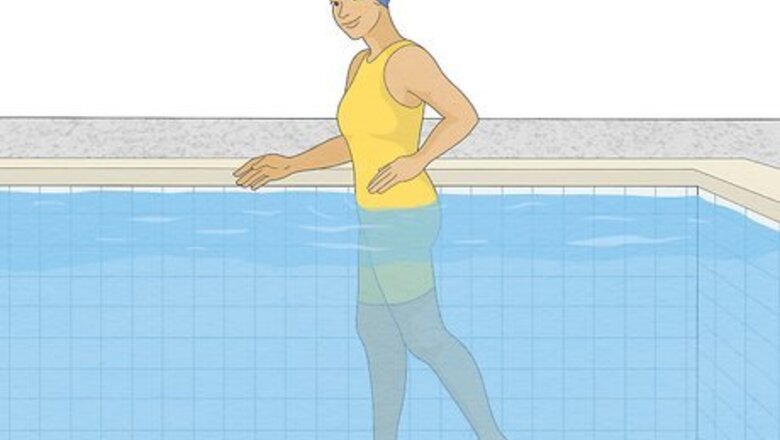
views
- To front float, inhale deeply and push your face into the water. Let your legs float behind you as you look toward the floor of the pool.
- Front float safely by staying in the shallow end of the pool near a wall. Use flotation devices to help you stay afloat if you need to.
- Once you master the front float, try other floating techniques, like the jellyfish float and the I drill.
Front Float Technique
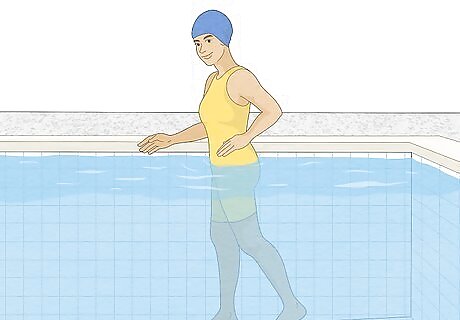
Start in the shallow end of the pool near the wall. It’s much easier to practice your front float if you can quickly get your feet underneath you again. Head to the shallow end, and find a spot near the wall that you can grab onto if needed. If you’re nervous or still new to swimming, ask a friend or family member to spot you while you practice your front float. Don’t feel comfortable in the water yet? Try dipping your toe in to get a feel for it. Walk into the pool slowly and calmly, going at your own pace.
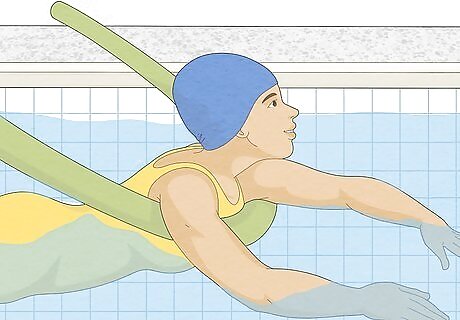
Hold a floatie or noodle in each hand for extra support. Foam floaties and pool noodles give you the buoyancy you need to stay afloat in the water. If you want extra help with your front float, hold a floatie or a noodle in each hand as you practice. For even more support, put a floatation device underneath each armpit or your stomach. This will help support your upper body and let you relax a little more. Pool noodles can help you greatly with getting your body positions right in the water. You can use them either on your back or on your front to start floating. Pool noodles can give you a middle ground, without really bringing you up above the water. They keep you right on that surface level, which is great for float practice.
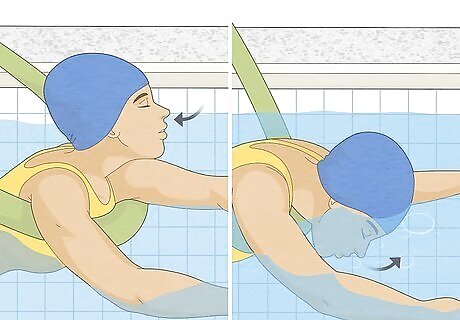
Inhale deeply, then press your face into the water. Take a deep breath in, then push your face underwater. You’ll notice that the air in your lungs helps keep you afloat. Keep holding your breath for about 15 seconds, or until you want to stand back up again. If you’re new to swimming, try blowing bubbles while your face is underwater. You can do this by gently blowing the air out of your mouth.
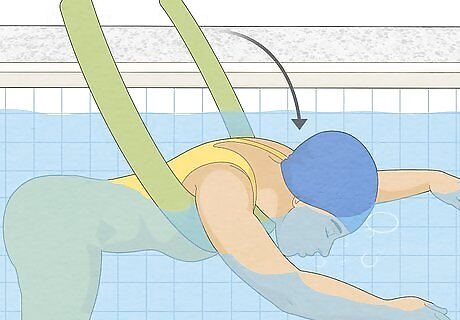
Bend forward until your face and upper body are in the water. Keep your chest, abdomen, and face pointed down towards the bottom of the pool as you transition into the front-float position. Don’t turn your head or body to the side. If you’re wearing goggles, look down at the bottom of the pool and enjoy the view! You may also want to wear a nose clip to keep water out of your nose while you float face down. If you’re feeling nervous, hang onto the pool wall when you bend forward. That way, you’ll stay in the same spot and you can quickly pick your head up if you need to.

Extend your legs straight behind you. As you hold your breath, gently lift your feet up off the floor and let them dangle behind you in the water. You’ll feel your hips start to rise toward the surface of the water, which is exactly what you want. Keep your legs slightly open behind you.

Tuck your knees and lift your face to stop floating. When you’re about to run out of breath, bring your legs in toward your chest to get them underneath you, then push your feet toward the floor. Lift your face out of the water to stand up in the pool again. To get good at the front float, try practicing it 5 to 10 times in a row.
Front Float Variations and Drills
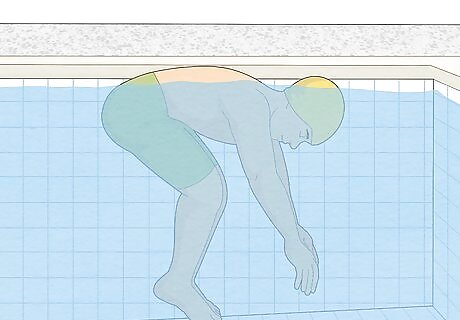
Try the jellyfish float by letting your arms and legs dangle down. Start by standing waist-deep in the water, then take a deep breath and submerge yourself in the water. Allow your legs and arms to dangle down towards the bottom of the pool while you float. Relax and stay in this position for as long as you like.

Do the “I” drill to float with your body in a straight line. Stand waist deep in the water, take a deep breath, and then bend forward until your face is submerged. Let your legs float behind you and push your arms back by your sides. Hold this position while you float, and lift your head out of the water to breathe when you need to. Some people find it difficult to keep their legs from sinking in this position. If that’s the case, focus on engaging your core to keep your body in a straight line.
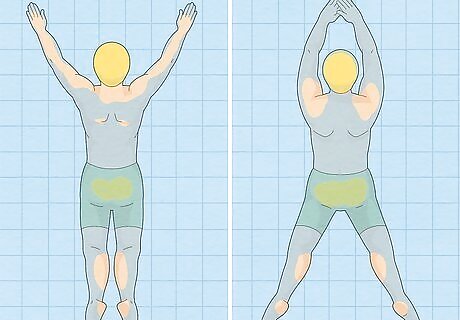
Alternate between extending your arms and legs into a “Y” shape. Stand in waist-deep water, take in a deep breath and bend down until your face is submerged in the water. Get into the “I” shape position, extend your arms outwards into a “Y” shape, then slowly bring them back to the “I” shape position. Next, keep your arms in the "I" shape position, extend your legs out into an inverted “Y” shape, and slowly bring them back into an “I” shape again. Continue to alternate and float this way for as long as you like. Moving your arms and legs helps strengthen your core so you can front float better.

Move your arms and legs simultaneously from an “I” to an “X” shape. Take a deep breath and submerge your face in the water as you lean into the front-float position. Move your legs and arms outwards at the same time so your body looks like an “X” from above. Then, bring your arms and legs back into an “I” shape at the same time. Repeat this for as long as you like. This drill is similar to the “Y” drill, except you’ll be moving your arms and legs outwards and inwards at the same time instead of alternating them. This drill also helps strengthen your core and improve your front float.



















Comments
0 comment